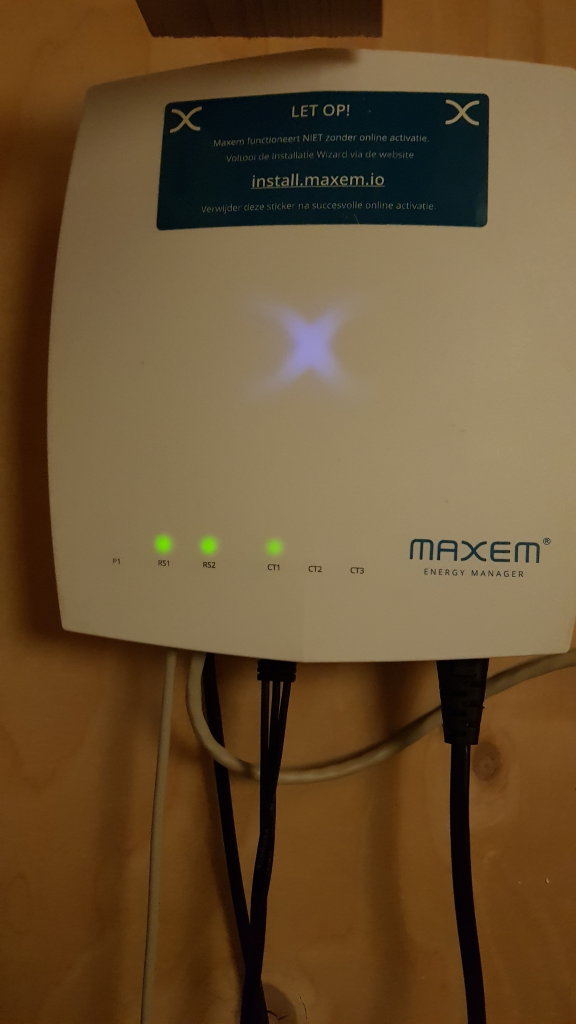The ‘going electric’ will be different blogs from my usual beat. Not only because they will not be related (directly) to software development, but also because they are opinionated and personal reports; editorials about switching over to an electric car. They will list my personal joys and annoyances about the switch, but I’ll try to be fair and balanced.
Charging at home
The whole topic about charging at home is confusing when you do not own an electric car, and to be honest I still don’t get it 100%. You can charge from any 220 volt socket, but that does not charge very fast, because that power group may be shared with other appliances. So at least it would be wise to dedicate a single 16 amps power group to charging your car. A single dedicated group should put about 40 km of range per hour in your battery pack. Some simplified math then tells us that a 400 km pack will take about a full night’s to charge (I know it’s not linear, but let’s keep this simple). And even though that will suffice for 99% of the use cases, 10 hours for a full charge is quite some time…
Wall charger
BTW, since you are rigging up a dedicated power group, why not also attach a dedicated charge point to your outside wall. It is very convenient. Although I’m still not impressed with the cable management systems of most wall chargers, Tesla’s in the lead.

A coiled wire looks a lot better, but the price for a better look is that the cable can’t be used at its full length.

I mean, it is on the outside of your house, and my spouse is not very pleased with how it looks. Certainly something can be done with a spring retracting the cable into a compartment or something. But a reel has problems as well; copper spools and high currents don’t mix well.
Anyhow, the Tesla wall charger is one of the cheapest, but more interestingly it can be put into several modes to tweak how fast your car is charging, depending on the amount of current you have available.
Maxem
When I was preparing for my wall charger, a friend of mine suggested that I buy a Maxem. A Maxem is a power manager; it controls the flow of current in your house, coming from the grid, solar panels, and other sources. But it also has a neat trick up its sleeve; it can load balance up to two car chargers over multiple power groups.
In a typical Dutch home there are three phases of each 25 amps entering the house. These are then limited to 16 amps each by a fuse. In the Maxem setup all three phases are combined into a single outbound cable to the car charger.

In the photo above you see in green the actual in-house power groups connected to each of the three phases, each with its own circuit breaker. And to the right in orange an on/off switch (to turn off the wall charger when you are away on holiday or something) with an ammeter to the right. Below the switch and ammeter is a thick cable running to the car charger.
Next to this setup is the Maxem itself.

It has data connections to the internet and to the Tesla wall charger (the two grey UTP cables on the left), its own power cord (to the right), and the three black wires in the middle. Those three wires go to current sensors around the three phases coming into the house.
This setup allows the Maxem to measure the incoming current and dynamically configure the Tesla Wall charger to increase or decrease charging speed accordingly, to maximize the power going into the battery pack, whilst prevent overloading any of the fuses or wiring. This roughly doubles the charging speed to 70 km per hour. I liked that idea, because 10 hours is long if you arrive home late, and need to leave early. This cuts that roughly in half.
Another solution for increasing the charge speed would be to upgrade the connection to my home into what is called “power current” at 400 volts, but comes with a far more expensive monthly fee than the costs of a Maxem.
Also the Maxem registers all charging sessions and puts out a monthly report; this is convenient for declaring the power my corporate car took from my private connection. And whenever I decided to put solar panels on my roof (I do not have an ideal oriented roof), it can manage which gets the power first, and the remainder then goes into the car.
When the battery packs become bigger (600-800km) in the future, and a single night’s of charging won’t cut it anymore, it is nice to know there are options. But what I still don’t understand is how three phase charging works. My Tesla says it is getting 24 amps when charging at 70 km/h, but 24 amps is only 50% more than the 16 amps of single group. While 70 km/h is 75% more compared to the 40 km/h a single group provides. Apparently it has to do with the three phases being “out of sync”; the current on a single phase is not flowing continuously, but it fluctuates (it is called alternating current for a reason). By combining the three phases, I assume you can use the highest flow amount on each phases, thus adding up to… Or something. If I understood this exactly, I would explain 😀
